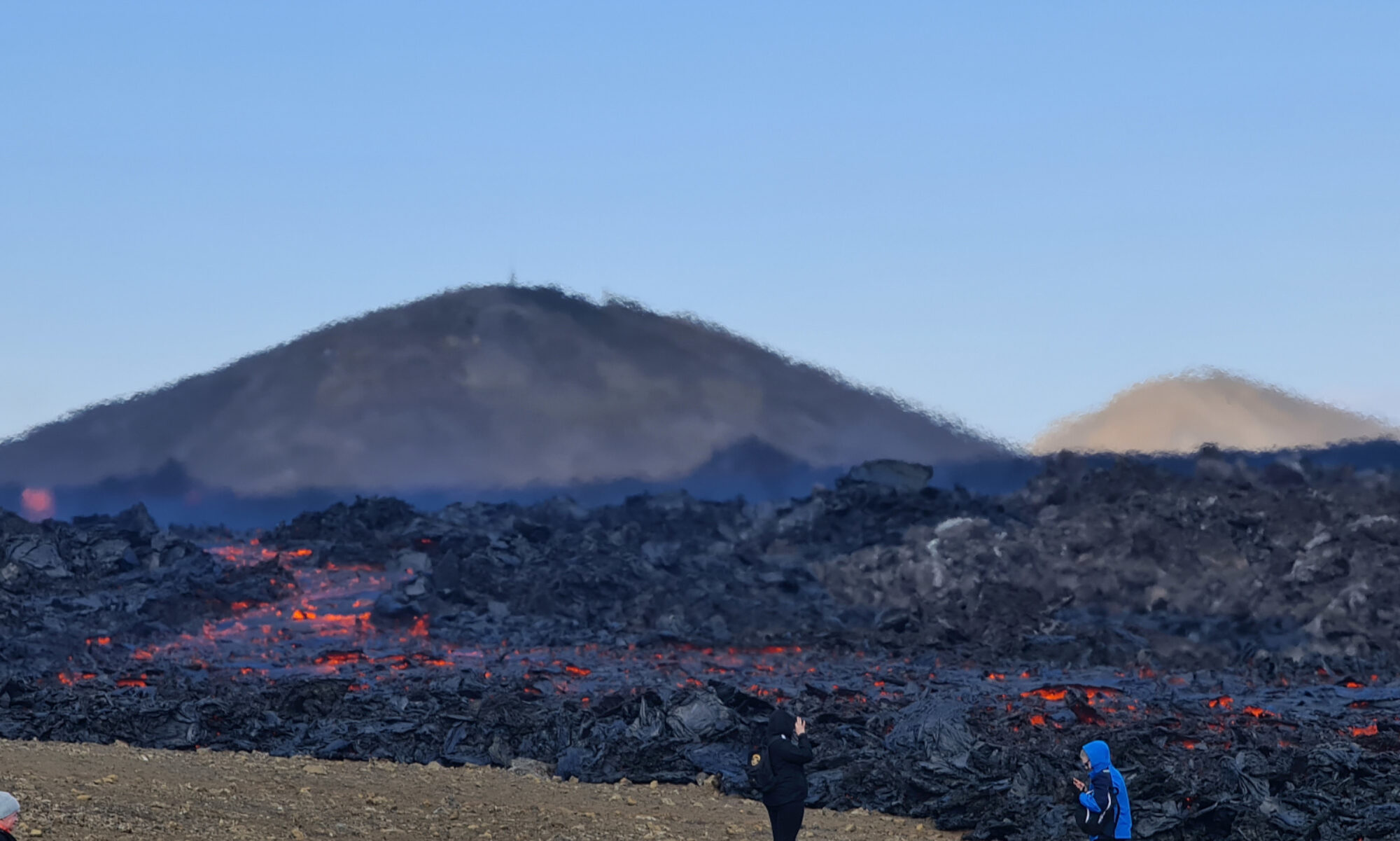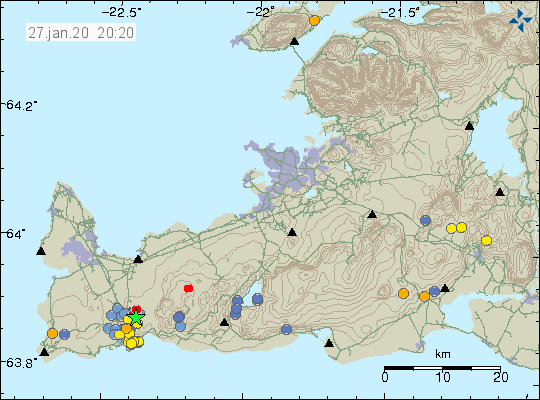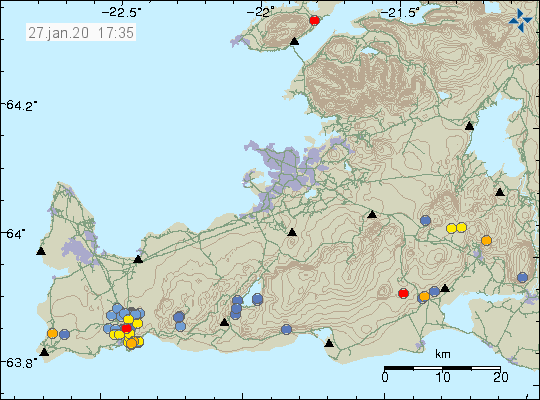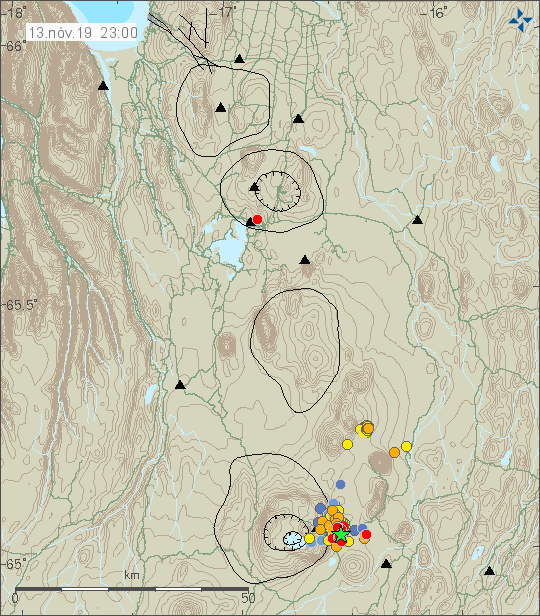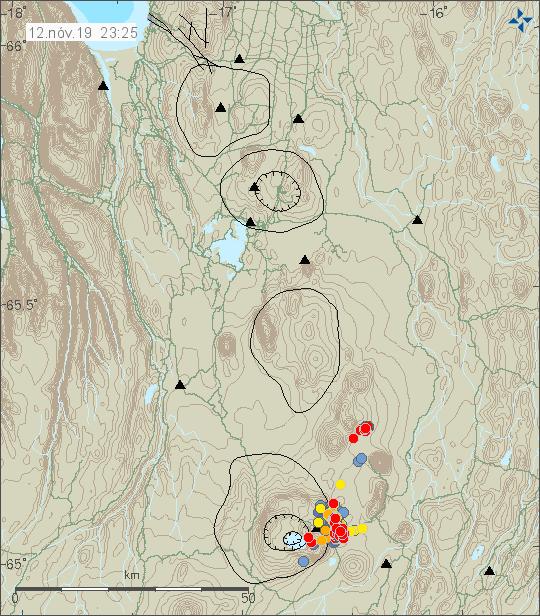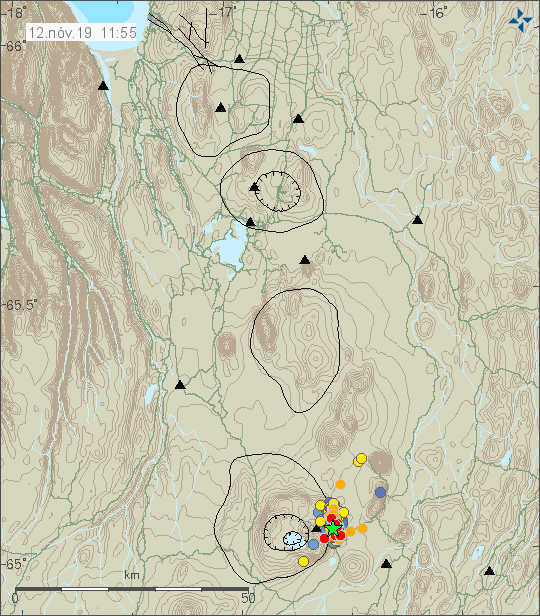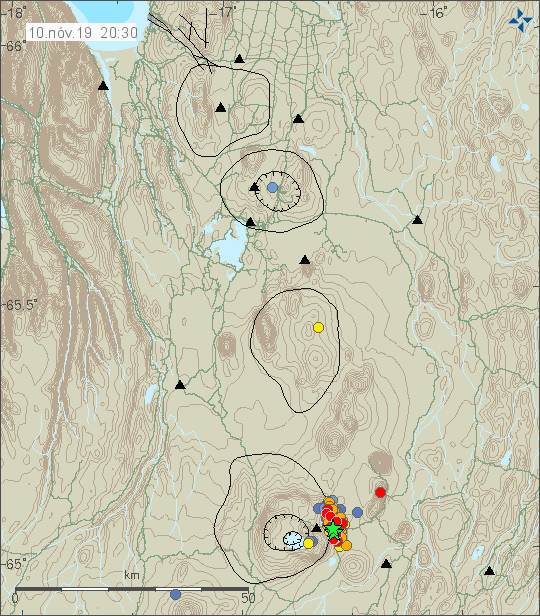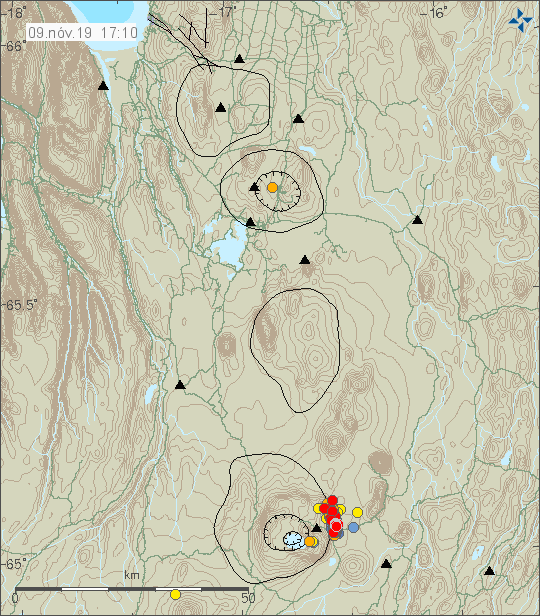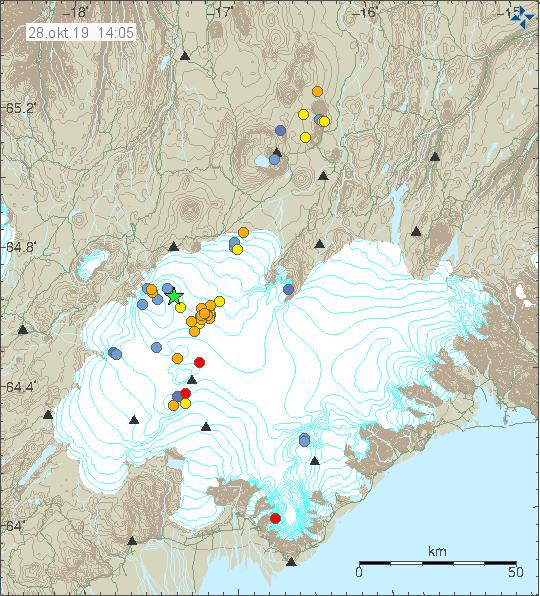Today (17. February 2020) there has been a increased earthquake activity in the volcano called Reykjanes that is west of Þorbjörn mountain close to Grindavík town. Most of this earthquake activity is small with largest earthquakes having magnitude of Mw2,8. Over 160 earthquakes have happened today. Earthquake activity is ongoing so this numbers are going to change quickly.
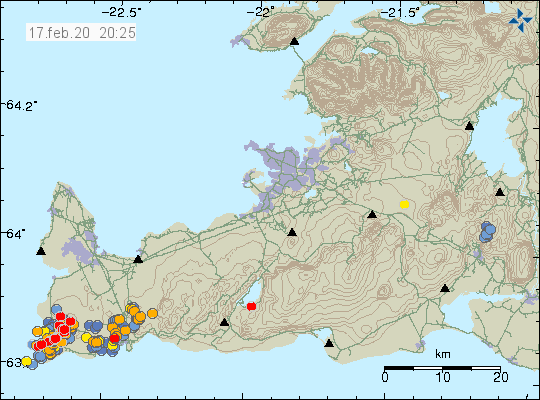
The earthquake activity today. Reykjanes volcano is located to the far west on this image. Copyright of this image belongs to Icelandic Met Office.
Inflation continues in this area without a change and has now reached more than 60mm close to Þorbjörn mountain area. I don’t know for sure how much inflation has now taken place in this area.
Pictures of the area with the earthquakes
Today (17. February 2020) I did go to this active area to take few pictures. I didn’t get many pictures because the weather was cold and windy. All pictures are taken by me.
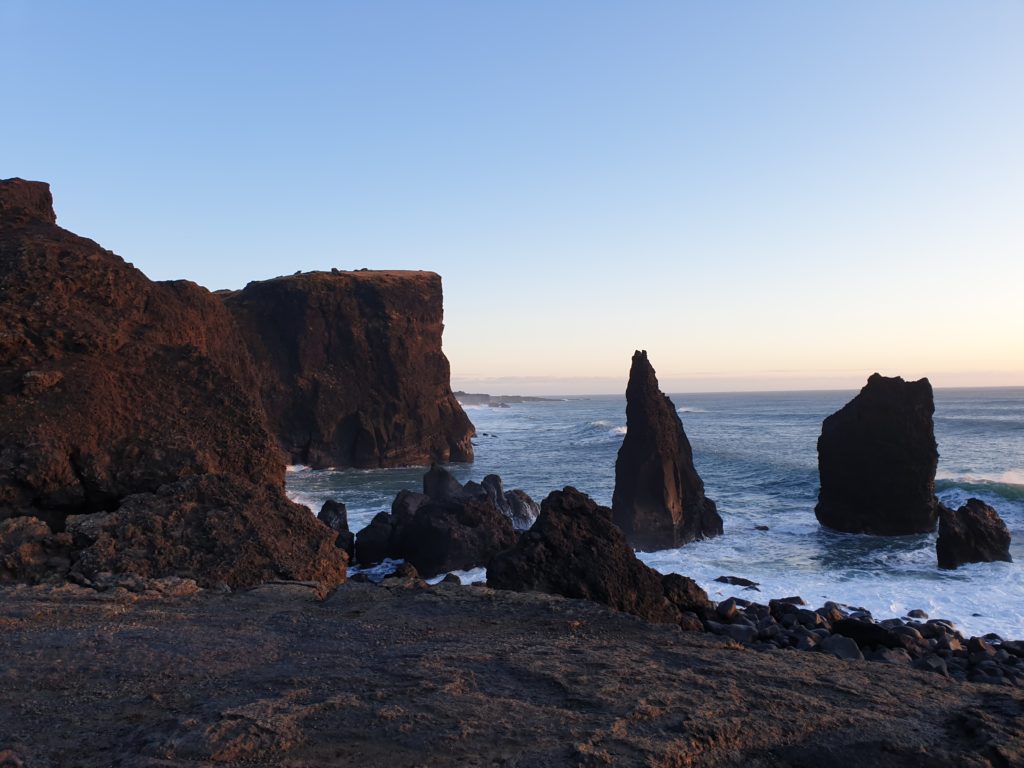
The Reykjanes and the Atlantic ocean. Copyright Jón Frímann Jónsson
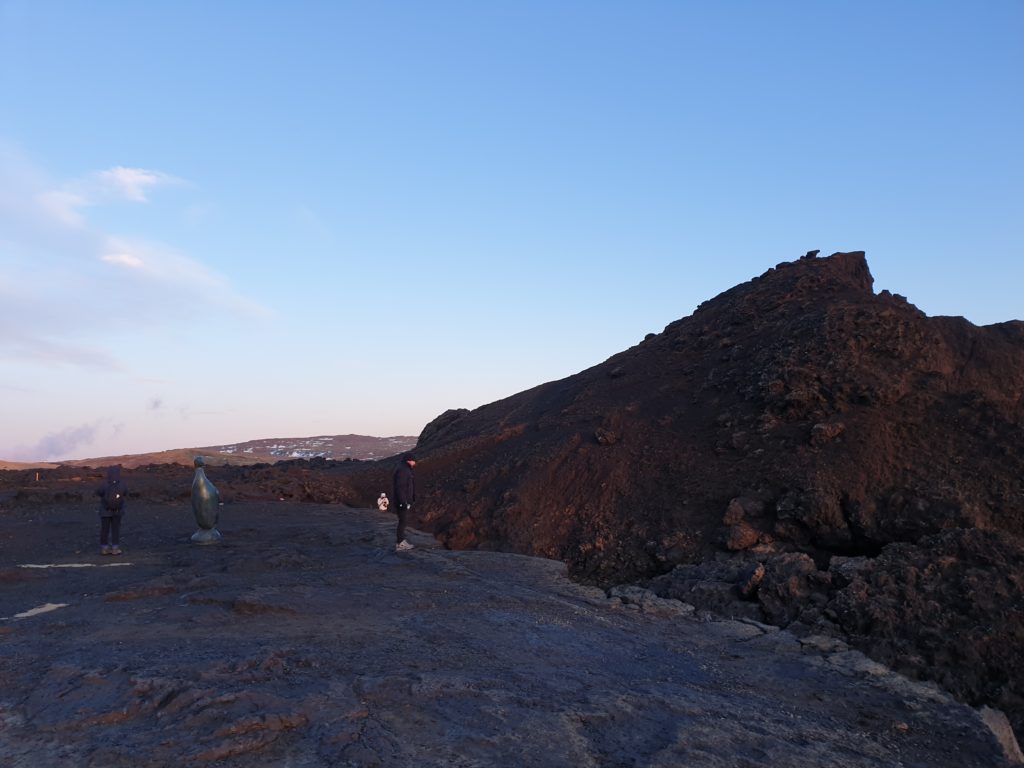
The rock cliff of the coastline. Copyright Jón Frímann Jónsson
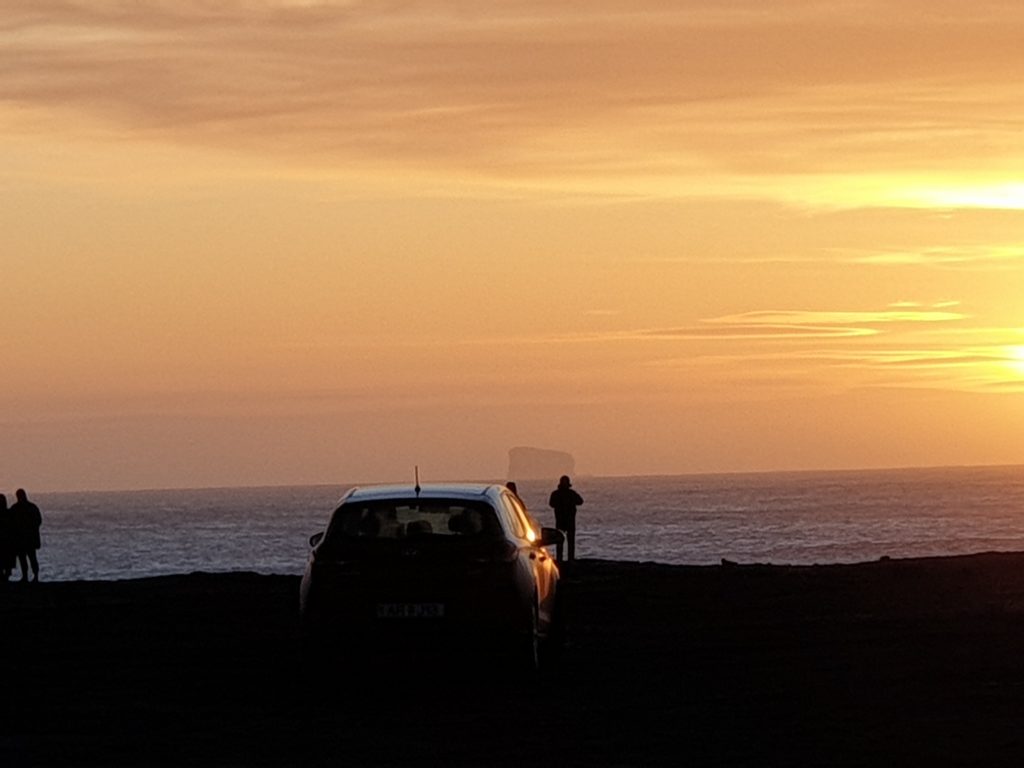
Eldey island at a distance. Copyright Jón Frímann Jónsson
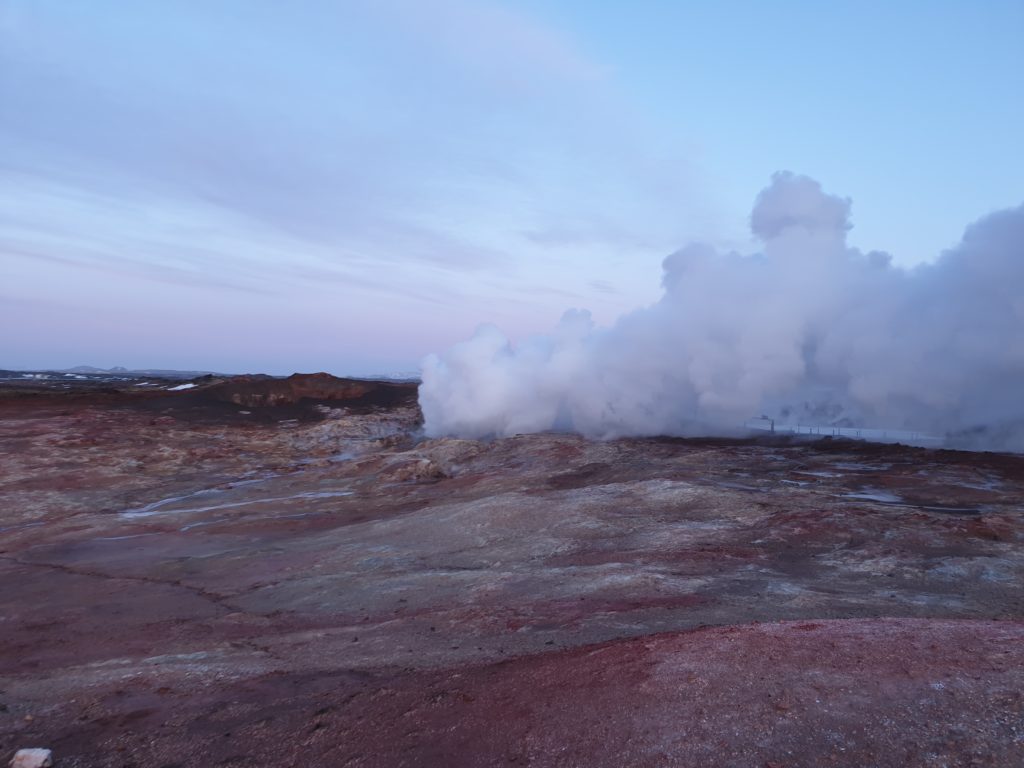
Gunnuhver hot spring. It makes steam. Copyright Jón Frímann Jónsson
More pictures and a video can be found on my Instagram here.
Donations
Please remember to support my work. The second half of February is going to be really broke for me because of moving back to Iceland and other low income related problems. Just donate if you can do so. Thanks for the support. 🙂
